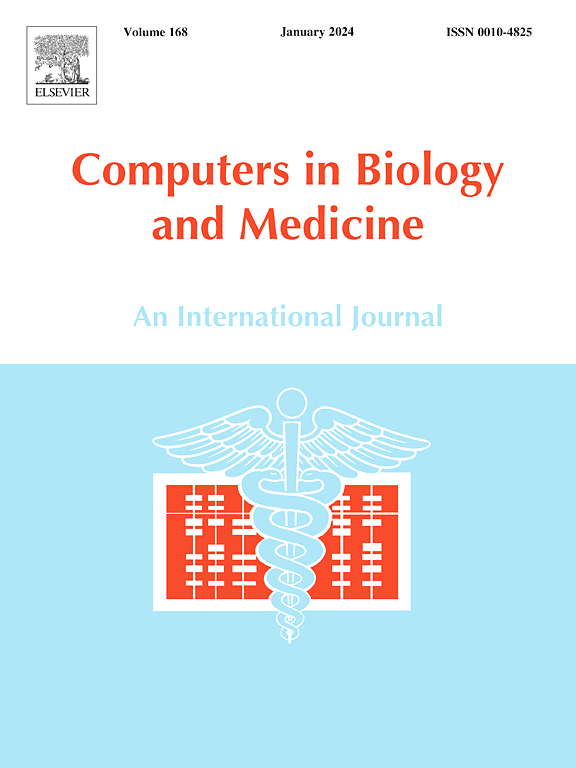Graph convolution networks model identifies and quantifies gene and cancer specific transcriptome signatures of cancer driver events
IF 7
2区 医学
Q1 BIOLOGY
引用次数: 0
Abstract
Background
The identification and drug targeting of cancer causing (driver) genetic alterations has seen immense improvement in recent years, with many new targeted therapies developed. However, identifying, prioritizing, and treating genetic alterations is insufficient for most cancer patients. Current clinical practices rely mainly on DNA level mutational analyses, which in many cases fail to identify treatable driver events. Arguably, signal strength may determine cell fate more than the mutational status that initiated it. The use of transcriptomics, a complex and highly informative representation of cellular and tumor state, had been suggested to enhance diagnostics and treatment successes. A gene-expression based model trained over known genetic alterations could improve identification and quantification of cancer related biological aberrations’ signal strength.
Methods
We present STAMP (Signatures in Transcriptome Associated with Mutated Protein), a Graph Convolution Networks (GCN) based framework for the identification of gene expression signatures related to cancer driver events. STAMP was trained to identify the p53 dysfunction of cancer samples from gene expression, utilizing comprehensive curated graph structures of gene interactions. Predictions were modified for generating a quantitative score to rank the severity of a driver event in each sample. STAMP was then extended to almost 300 tumor type-specific predictive models for important cancer genes/pathways, by training to identify well-established driver events’ annotations from the literature.
Results
STAMP achieved very high AUC on unseen data across several tumor types and on an independent cohort. The framework was validated on p53 related genetic and clinical characteristics, including the effect of Variants of Unknown Significance, and showed strong correlation with protein function. For genes and tumor types where targeted therapy is available, STAMP showed correlation with drugs sensitivity (IC50) in an independent cell line database. It managed to stratify drug effect on samples with similar mutational profiles. STAMP was validated for drug-response prediction in clinical patients’ cohorts, improving over a state-of-the-art method and suggesting potential biomarkers for cancer treatments.
Conclusions
The STAMP models provide a learning framework that successfully identifies and quantifies driver events’ signal strength, showing utility in portraying the molecular landscape of tumors based on transcriptomics. Importantly, STAMP manifested the ability to improve targeted therapy selection and hence can contribute to better treatment.
图卷积网络模型识别和量化癌症驱动事件的基因和癌症特异性转录组特征。
背景:近年来,随着许多新的靶向治疗方法的开发,致癌(驱动)基因改变的识别和药物靶向已经取得了巨大的进步。然而,对大多数癌症患者来说,识别、优先排序和治疗基因改变是不够的。目前的临床实践主要依赖于DNA水平的突变分析,这在许多情况下无法识别可治疗的驱动事件。有争议的是,信号强度可能比启动它的突变状态更能决定细胞的命运。转录组学是细胞和肿瘤状态的一种复杂且信息丰富的表征,已被建议用于提高诊断和治疗的成功率。基于已知遗传改变的基因表达模型可以改善癌症相关生物畸变信号强度的识别和量化。方法:我们提出了STAMP (signature in Transcriptome Associated with Mutated Protein),这是一个基于图卷积网络(GCN)的框架,用于识别与癌症驱动事件相关的基因表达特征。STAMP经过训练,利用基因相互作用的综合图结构,从基因表达中识别癌症样本的p53功能障碍。对预测进行了修改,以生成一个定量分数,对每个样本中驾驶员事件的严重程度进行排序。STAMP随后扩展到近300种肿瘤类型特异性预测模型,用于重要的癌症基因/途径,通过训练从文献中识别成熟的驱动事件注释。结果:STAMP在几种肿瘤类型和独立队列的未见数据上获得了非常高的AUC。该框架在p53相关的遗传和临床特征上得到验证,包括未知意义变异的影响,并显示出与蛋白质功能的强相关性。对于可靶向治疗的基因和肿瘤类型,STAMP在独立的细胞系数据库中显示与药物敏感性(IC50)相关。它成功地对具有相似突变谱的样品进行了药物效应分层。STAMP在临床患者队列中被验证用于药物反应预测,改进了最先进的方法,并为癌症治疗提供了潜在的生物标志物。结论:STAMP模型提供了一个学习框架,可以成功地识别和量化驱动事件的信号强度,在描述基于转录组学的肿瘤分子景观方面显示出实用性。重要的是,STAMP显示了改善靶向治疗选择的能力,因此可以促进更好的治疗。
本文章由计算机程序翻译,如有差异,请以英文原文为准。
求助全文
约1分钟内获得全文
求助全文
来源期刊

Computers in biology and medicine
工程技术-工程:生物医学
CiteScore
11.70
自引率
10.40%
发文量
1086
审稿时长
74 days
期刊介绍:
Computers in Biology and Medicine is an international forum for sharing groundbreaking advancements in the use of computers in bioscience and medicine. This journal serves as a medium for communicating essential research, instruction, ideas, and information regarding the rapidly evolving field of computer applications in these domains. By encouraging the exchange of knowledge, we aim to facilitate progress and innovation in the utilization of computers in biology and medicine.
 求助内容:
求助内容: 应助结果提醒方式:
应助结果提醒方式:


